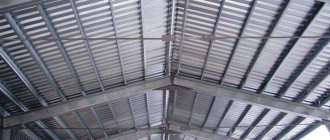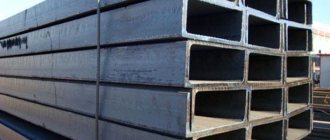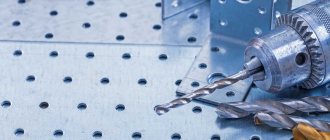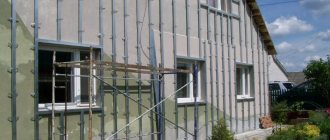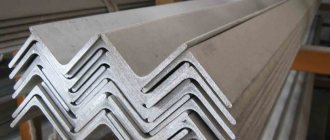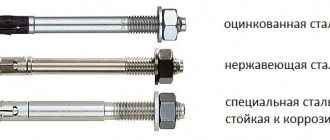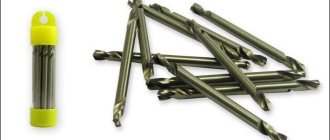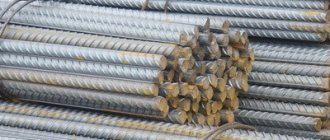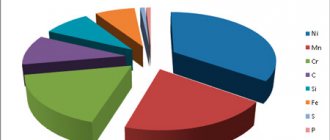Methods of heat treatment of carbon steel U12.
Annealing of such steel is carried out by heating to 770C, then the alloy is gradually cooled.
As a result of such heat treatment, the microstructure of the material changes slightly, namely: quite a lot of cementite inclusions that did not dissolve during heating are retained in the austenite. They play the role of crystallization centers during the cooling process (decomposition of austenites). After annealing, a spheroid structure (or granular pearlite) is formed, which has lower hardness readings, due to which the machinability of steel by cutting improves. This structure is ideal for hardening U12 steel, since the tendency to increase austenite grains is significantly reduced, and the optimal hardening temperature of U12 steel is also reduced. All this reduces the risk of metal cracking, increasing its toughness and strength. The main element that determines the good wear resistance of carbon tool steels is carbon, since its hardness, that is, the wear resistance of tools, after heat treatment depends on the carbon content in martensite. The presence of alloying components greatly affects the hardenability of steel and increases the stability of martensite during heating of hardened steel.
Brand: steel, metal U12
Brand: U12
| Brand: | U12 |
| Substitute: | U10, U11 |
| Classification: | Carbon tool steel |
| Application: | cutting tools working in conditions that do not cause heating of the cutting edge: hand taps, small-sized machine taps, dies for grains, small-sized reamers, needle files, simple-shaped measuring tools: smooth gauges, staples. |
| Foreign analogues: |
| C | Si | Mn | Ni | S | P | Cr | Cu |
| 1.1 – 1.29 | 0.17 – 0.33 | 0.17 – 0.33 | up to 0.25 | up to 0.028 | up to 0.03 | up to 0.2 | up to 0.25 |
Ac1 = 730, Ac3(Acm) = 820, Ar1 = 700, Mn = 200
| Weldability: | not applicable to welded structures. |
| Flock Sensitivity: | not sensitive. |
| Tendency to temper brittleness: | not inclined. |
| Assortment | Size | Eg. | sв | sT | d5 | y | KCU | Thermal change |
| – | mm | – | MPa | MPa | % | % | kJ/m2 | – |
| The tape is annealed. | 0.08 – 3 | 750 | 10 |
| Steel | 590-690 | 325 | 28 | 50 | 270 | Annealing |
| Hardness U12 after annealing, GOST 1435-99 | HB 10 -1 = 217 MPa |
| T | E 10- 5 | a 10 6 | l | r | C | R 10 9 |
| hail | MPa | 1/Grad | W/(m deg) | kg/m3 | J/(kg deg) | Ohm m |
| 20 | 2.09 | 7830 |
| 100 | 2.05 | 10.5 | 45 | 7809 | 469 | 252 |
| 200 | 2 | 11.8 | 43 | 7781 | 503 | 333 |
| 300 | 1.93 | 12.6 | 40 | 7749 | 519 | 430 |
| 400 | 1.85 | 13.4 | 37 | 7713 | 536 | 540 |
| 500 | 1.78 | 13.1 | 35 | 7675 | 553 | 665 |
| 600 | 1.66 | 14.8 | 32 | 7634 | 720 | 802 |
| 700 | 15.3 | 28 | 7592 | 611 | 964 |
| 800 | 15 | 24 | 7565 | 712 | 1152 |
| 900 | 16.3 | 25 | 7489 | 703 | 1196 |
| 1000 | 16.8 | 699 |
| T | E 10- 5 | a 10 6 | l | r | C | R 10 9 |
Foreign analogues of the material
Both exact and closest analogues are indicated!
| USA | Germany | Japan | France | England | European Union | Italy | China | Bulgaria | Hungary | Poland | Czech | Austria |
| – | DIN,WNr | JIS | AFNOR | B.S. | EN | UNI | G.B. | BDS | MSZ | PN | CSN | ONORM |
| – Short-term strength limit, [MPa] |
| sT | – Proportional limit (yield strength for permanent deformation), [MPa] |
| d5 | – Elongation at break, [%] |
| y | – Relative narrowing, [%] |
| KCU | – Impact strength, [kJ/m2] |
| HB | – Brinell hardness, [MPa] |
| Physical properties: |
| T | – Temperature at which these properties were obtained, [Deg] |
| E | – Modulus of elasticity of the first kind, [MPa] |
| a | – Coefficient of thermal (linear) expansion (range 20o – T), [1/degree] |
| l | – Thermal conductivity coefficient (heat capacity of the material), [W/(m deg)] |
| r | – Material density, [kg/m3] |
| C | – Specific heat capacity of the material (range 20o – T), [J/(kg deg)] |
| R | – Electrical resistivity, [Ohm m] |
| Weldability: |
| no limits | – welding is performed without heating and without subsequent heat treatment |
| limited weldability | – welding is possible when heated to 100-120 degrees. and subsequent heat treatment |
| difficult to weld | – to obtain high-quality welded joints, additional operations are required: heating to 200-300 degrees. during welding, heat treatment after welding - annealing |
General information about U12 steel
| Substitute brand |
| steel: U10A, U11A, U10, U11. |
| Type of delivery |
| Long products, including shaped steel: GOST 1435-74, GOST 2590-71, GOST 2591-71, GOST 2879-69. Calibrated rod GOST 1435-74, GOST 7417-75, GOST 8559-75, GOST 8560-78. Polished rod and silver steel GOST 1435-74, GOST 14955-77. Tape GOST 2283-79, GOST 21997-76. Strip GOST 103-76, GOST 4405-75. Forgings and forged blanks GOST 1435-74, GOST 4405-75, GOST 1133-71. |
| Application |
| cutting tools working in conditions that do not cause heating of the cutting edge: hand taps, small-sized machine taps, dies for grains, small-sized reamers, needle files, simple-shaped measuring tools: smooth gauges, staples. |
At what temperatures is U12 steel processed? Hardening of tool steels.
In the annealed, that is, initial state, U12 tool steel has a pearlite granular structure. The structure of this material additionally includes secondary cementite. This steel has low hardness and is therefore excellent for cutting. Hardening of steel U12 must be carried out at a temperature exceeding the upper critical point. In this case, the metal will acquire a martensitic structure. Quenching is carried out in water or in aqueous salt solutions. After hardening, the tool steel must be subjected to low tempering, the temperature of which is 150 - 170C. Thanks to this, the metal will lose a significant amount of quenching stress and retain high hardness.
Since carbon steel U12 is characterized by low hardenability, tools of small thickness, such as hacksaw blades, files and surgical instruments, are mainly made from it. This metal is used as a cutting tool only when cutting materials with low hardness, since if heating exceeds 200C, the hardness of the steel sharply decreases.
How the hardness of hardened tool steel U12 is measured.
The hardness of hardened steel U12 is measured by the Rockwell method . Using the values obtained during measurements, the basic properties of the metal being tested can be determined. Rockwell hardness is calculated as follows:
- a diamond cone with an apex angle of 120 degrees is pressed into the sample of the material being examined;
- then the depth of the resulting indentation is measured;
- You can also use a special steel ball instead of a cone; its diameter is 1.5875 millimeters.
Published: 06/06/2014 · Views: [14436]
Steel U12, U12A carbon tool
Decoding
- According to GOST 1435-99, the letter U in the designation of the steel grade means that the steel is carbon.
- The number 12 following the letter Y indicates the average mass fraction of carbon in tenths of a percent, i.e. The average carbon content in steel 12 is about 1.2%
- The presence of the letter A at the end of the marking means that the steel is high quality, i.e. with increased requirements for the chemical composition.
Substitute
Steels U10A, U11A, U10, U11.
Foreign analogues [1]
| steel grade | Standard |
| N12 (Poland) | PN/H 85020 |
| N 12 E (Poland) | PN/H 85020 |
| S122 (Hungary) | MSZ 4354 |
| U12 (Bulgaria) | BDS 6751 |
| I 12 A (Bulgaria) | BDS 6751 (83) |
| SK2 (Japan) | JIS G4401 (83) |
| 19221 (Czech Republic/Slovakia) | CSN 419221 |
| BW1C (UK) | BS 4659 (89) |
| C120 KU (Italy) | UNI 2955-82 Part 2 |
| C 120E3U (France) | AFNOR NF NF A 35-590 (92) |
| C 120 (Spain) | UNE 36071 (75) |
Type of delivery
- Long products, including shaped steel: GOST 1435-90, GOST 2590-88, GOST 2591-88, GOST 2879-88.
- Calibrated rod GOST 1435-90, GOST 7417-75, GOST 8559-75, GOST 8560-78.
- Polished rod and silver steel GOST 1435-90, GOST 14955-77. Tape GOST 2283-79, GOST 21997-76.
- Strip GOST 4405-75, GOST 103-76.
- Forgings and forged blanks GOST 1435-90, GOST 4405-75, GOST 1133-71.
Characteristics and Application
Tool steel U12 (U12A) belongs to the group of steels with reduced hardenability. Steels of this group must be hardened in water, and tools made of this steel, as a rule, have an unhardened core. Quenching in water requires measures to be taken against severe warping, i.e. When designing a tool, sharp corners and sharp transitions of sections should be avoided [2].
Experience shows that the hardenability of steel U12 and U12A is very variable. Individual melts of the same brand can be calcined to different depths [3].
When choosing this grade of steel, you should keep in mind that the higher the hardness (for example, more carbon, lower tempering), the higher the wear resistance, but the lower the strength. Therefore, if the operation of the tool is not accompanied by shock loads, the blade edge has a sufficient cross-section - it is desirable to have a high hardness (62 HRC and above) and, therefore, high-carbon steel U12 should be used and a low tempering should be given (150-200 °C), otherwise steels with lower carbon content are used, for example U7-U8, after tempering at 250-300 °C and ˂60 HRC [3]xxxxxxxxx.
U12 steel is used for the manufacture of tools with maximum wear resistance and the highest hardness, for example:
- incisors,
- various metal-cutting and measuring tools,
- files,
- chisels for cutting files,
- engraving tool,
- drawing boards, etc.
Cutting tools operating in conditions that do not cause heating of the cutting edge:
- hand taps,
- small-sized machine taps,
- dies for grains,
- small-sized reamers,
- needle files,
- measuring instrument of simple form: smooth gauges, staples,
- stands for cold grinding of edged and notched small sizes and without cross-sectional transitions,
- cold heading dies and small sized stamps,
- calibers of simple shape and lower accuracy classes.
Chemical composition, % (GOST 1435-99)
| steel grade | Mass fraction of element, % |
| carbon | silicon | manganese | sulfur | phosphorus |
| no more |
| U12 | 1,10-1,29 | 0,17-0,33 | 0,17-0,33 | 0,028 | 0,030 |
| U12A | 1,10-1,29 | 0,17-0,33 | 0,17-0,28 | 0,018 | 0,025 |
Phase composition, % by mass
| Ferrite | Carbides | Carbide type |
| 81-83,5 | 18,5-17 | Fe3C |
Temperature of critical points, °C [2]
Hardening [3]
The hardening temperature of hypereutectoid steel U12A lies in the range between Ac3 and Ac1. The structure of steel in the hardened state consists of martensite and excess (secondary) carbides. The optimal hardening temperature is 790 °C.
In hardened steel, the tetragonality of martensite and internal stresses create significant brittleness, so tempering after hardening is a mandatory operation. [3]
Recommended hardening modes [4]
| Option | Temperature, °C | Cooling | Cooling down to 20°C | H.R.C. | Structure or score of martensite on scale No. 3 GOST 8233-56 |
| Wednesday | Temperature, °C | Excerpt |
| I | 770-790 | Water | 20-40 | Up to 200-250 °C | In oil | 62-64 | 1 |
| II | 5% aqueous solution of table salt | 62-65 |
| III | 5-10% aqueous alkali solution | 62 – 64 |
| IV | 790 – 810 | Industrial oil 12 | Up to 20 – 40 °C | – | 62-64 | 1-3 For products with a diameter or thickness of less than 6-8 mm |
| 40 – 50 | Sorbitol-troostite Depending on the diameter or thickness of the product |
| V | 790-810 | Melt of saltpeter, alkali | 150 – 180 | Exposure in the melt is equal to exposure during heating for quenching | On air | 62-64 | 1-3 For products with a diameter or thickness of less than 6-8 mm |
| VI | The melt temperature and duration of isothermal exposure are selected according to the diagram in Fig. 1, depending on the required hardness. Cooling to 20 °C in air | Sorbitol-troostite |
NOTES:
- It is recommended to calculate the duration of exposure during heating for hardening according to the All-Russian Scientific Research Institute method [5].
- Option III is used to prevent the formation of soft spots during hardening.
- When adding 4 - 6% water to the alkali melt, option V is used for products with diameters or thicknesses up to 10-12 mm.
Cold treatment [4]
| Hardening option | Cooling temperature, °C | Purpose | Hardness increase ΔHRC |
| IV | -50 | Dimensional stabilization of high precision tools | 1-2 |
NOTE. Cold treatment should be carried out no later than 1 hour after hardening.
Recommended holiday modes [4]
| Option | Vacation appointment | Heating temperature, °C | Heating medium | H.R.C. |
| I | Relieving stress, stabilizing structure and dimensions | 140-160 | Oil, molten saltpeter, alkali | 62-64 |
| 160-180 | 61-63 |
| 180-200 | 60 – 62 |
| 200-250 | 56-61 |
| II | Relieving stress and reducing hardness | See note 2 | Melt saltpeter, alkali, air atmosphere furnace | – |
NOTE:
- High precision products (1-2 microns) after preliminary grinding are subjected to repeated tempering (aging).
- The tempering mode to obtain a hardness below HRC 56 is selected according to a schedule in accordance with the required hardness.
- Tempering at temperatures above 250 C ensures stabilization of product dimensions.
- For heating rates and holding time during tempering, see table. 3 Applications.
Tempering temperature of various tools made of U12 steel [3]
| Types of tools | Steel | Temperature, °C | Acceptance hardness of the working part HRC |
| Taps | U12 | 180-200 | 60-62 |
| Sweeps | U12 | 160-180 | 62-64 |
Hardness of carbon steel U12 after tempering [7]
| steel grade | Akalka mode | Hardness after quenching HRC | Hardness HRC after tempering at temperature in °C |
| temperature in °C | cooling medium | 200 | 300 | 400 | 500 | 600 |
| U12 | 770-790 | Through water to oil | 62-64 | 61-63 | 54-58 | 48-52 | – | – |
Approximate heat treatment temperature and hardness of U10 steel in the annealed state [6]
| Annealing temperature °C | Hardness after annealing HB (no more) | Quenching temperature °C |
| 760-780 °C | 207 | 760-790 °C |
Technological process of isothermal annealing of steel U12, U12A [6]
| steel grade | First heating | Isothermal holding | Hardness HB |
| Temperature, °C | Exposure per hour | Temperature, °C | Exposure per hour |
| U12, U12A | 750-770 | 1,5-2,5 | 640-680 | 1-2 | 187-207 |
Recrystallization annealing temperature of steel [7]
| Pressure treatment followed by annealing | steel grade | Annealing temperature in °C |
| Cold drawing (calibration) of bars | U12 | 700 |
Approximate annealing modes for tool steels U12, U12A to improve machinability during cutting [7]
| Heating temperature in °C | Cooling | Indentation diameter according to Brinell in mm |
| 760-780 | With an oven at 50° per hour to a temperature of 500°C, and then in air | ≥4,2 |
NOTE. To improve the machinability of tool steels, high tempering at a temperature of 650-680 °C is also used.
Hardness [4]
| Without °Cannealing | After °C annealing | After °C hardening |
| dotp, mm | NV | dotp, mm | NV | Quenching temperature °C, °C, °C and cooling medium | H.R.C. |
| 3,7-3,3 | 269-341 | ≥4,2 | ≤207 | 760-780, water | ≥62 |
Mechanical properties depending on tempering temperature [8]
| tref., °C | σ0.2, MPa | σв, MPa | δ5, % | ψ, % | KSU, J/cm2 | Hardness HRCе |
| 400 | 1370 | 1570 | 9 | 24 | 20 | 52 |
| 500 | 880 | 1040 | 11 | 30 | 29 | 40 |
| 600 | 650 | 760 | 18 | 52 | 44 | 26 |
NOTE. Samples size 32x32x42 mm. Hardening from 760-790 °C.
Steel hardness depending on tempering temperature [8]
| tref., °C | Hardness HRCе |
| 160-180 | 62-64 |
| 180-220 | 59-63 |
| 200-270 | 55-61 |
| 450-500 | 37-47 |
NOTE. Samples with a cross section of 21-30 mm. Quenching from 810-830 °C in water.
Mechanical properties depending on test temperature
| tsp., °C | σ0.2, MPa | σв, MPa | δ5, % | ψ, % | KSU, J/cm2 |
| Annealing at 20 °C; hardness HB 207 [4, 9] |
| 20 | 325 | 590-690 | 28 | 45-55 | 27 |
| 200 | – | 570 | 23 | 47 | 73 |
| 400 | 310 | 450 | 41 | 60 | 69 |
| 600 | 110 | 140 | 56 | 74 | 62 |
| 700 | 59 | 76 | 56 | 82 | 356 |
| 800 | 53 | 72 | 59 | 85 | 323 |
| 900 | 34 | 40 | 52 | 91 | 225 |
| 1000 | 20 | 28 | 55 | 98 | 157 |
| A sample with a diameter of 5 mm and a length of 25 mm, °C, deformed and annealed. Deformation speed 10 mm/min; °C strain rate 0.007 1/s [10] |
| 700 | – | 105 | 60 | 68 | – |
| 800 | – | 100 | 52 | 96 | – |
| 900 | – | 60 | 40 | 100 | – |
| 1000 | – | 34 | 65 | 100 | – |
| 1100 | – | 18 | 74 | 100 | – |
| 1200 | – | 15 | 92 | 100 | – |
True generalized mechanical properties of annealed steel at 20 °C [4]
| Stretching | Compression | Torsion |
| sk, kgf/mm2 | q, % | sszh, kgf/mm2 | q, % | tk, kgf/mm2 | q, % |
| 50-60 | 100-110 | 50-60 | 150-160 | 50-60 | 85-95 |
- sk – true tensile strength
- sсж – true compression resistance
- q, % – true shift
- τk – true torsional strength
NOTE. For all types of deformation, fracture is ductile.
General information about U12A steel
| Substitute brand |
| steel: U10A, U11A, U10, U11. |
| Type of delivery |
| Long products, including shaped steel: GOST 1435-74, GOST 2590-71, GOST 2591-71, GOST 2879-69. Calibrated rod GOST 1435-74, GOST 7417-75, GOST 8559-75, GOST 8560-78. Polished rod and silver steel GOST 1435-74, GOST 14955-77. Tape GOST 2283-79, GOST 21997-76. Strip GOST 103-76, GOST 4405-75. Forgings and forged blanks GOST 1435-74, GOST 4405-75, GOST 1133-71. |
| Application |
| cutting tools working in conditions that do not cause heating of the cutting edge: hand taps, small-sized machine taps, dies for grains, small-sized reamers, needle files, simple-shaped measuring tools: smooth gauges, staples. |
